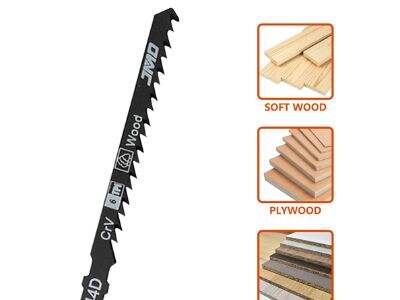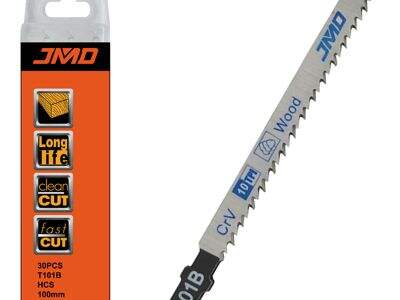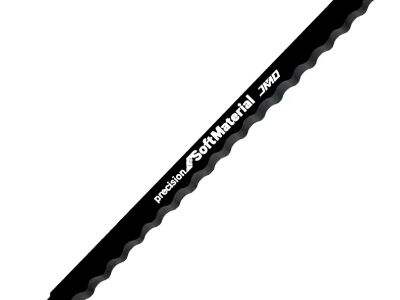Techknow Guide to precise cuts: Why blade geometry matters
The choice of a blade is crucial for good cuts when cutting materials such as wood or metal with a jigsaw. Blade geometry is what comes into play here
The shape and design of the blade, including the teeth, gullets, and overall structure are primarily controlled by blade geometry. Blade styles are designed to accommodate specific cutting needs, so you want to make sure the one you pick fits the work you do
The role of different blade designs in cutting efficiency
The design of your jigsaw blade affects both the quality and efficiency of your cuts. For instance, a blade with large teeth that are farther apart would be best for fast cuts in soft material such as wood while a blade with small closely spaced teeth is better for cutting through hard materials like metal

Jigsaw Blade Geometry and The Science Of High Performance Cutting
The Way jigsaw blades Geometry Works Is Amazing. The shape and size of the teeth on a blade dictate how fast it will cut and how smooth the final product from your table saw. To know exactly what the best bandsaw blade for re-sawing is dependant on various factors such as teeth per inch, and the angle of the tooth (hook) which affects how well it clears away sawdust leading to a clean cutting path
Deciding on the ideal blade style for several cutting requirements
Below are two main things that you need to consider when deciding which jigsaw blade to use while cutting. If you must make a curved cut in wood, for instance, high-precision will require a narrow-profiled blade with fine teeth. Alternatively, if you are looking for a saw that can cut through thicker metal, then you might need to choose one with bigger teeth and a more variable style of cutting process

Optimized blade geometry for faster cutting speed and increased blade life
You can also improve cutting speed and blade life by selecting jigsaw blades that have been optimised for the geometry of your specific cuts. The right blade for the material you're attempting to cut will yield cleaner, faster cuts that will save hours of time and frustration on a project. More importantly, a blade that can remove sawdust more efficiently will also last longer and stay sharper for much longer
To summarize, blade geometry is one of the most important details covering jigsaw blades performance. Decoding blade design will help you select the optimal blade shape for a specific cutting job, ensuring your cuts are efficient and accurate. Clearance on optimised blade geometry improves cutting performance, both in speed and provides you with a longer lasting blade, making your jigsaw even more versatile for all your cutting requirement. So, for best results with your jigsaw — save for striping the blade teeth off is use geometry relevant to the task at hand
Table of Contents
- Techknow Guide to precise cuts: Why blade geometry matters
- The role of different blade designs in cutting efficiency
- Jigsaw Blade Geometry and The Science Of High Performance Cutting
- Deciding on the ideal blade style for several cutting requirements
- Optimized blade geometry for faster cutting speed and increased blade life

 EN
EN
 AR
AR
 BG
BG
 HR
HR
 CS
CS
 DA
DA
 NL
NL
 FI
FI
 FR
FR
 DE
DE
 EL
EL
 IT
IT
 JA
JA
 NO
NO
 PL
PL
 PT
PT
 RO
RO
 RU
RU
 ES
ES
 SV
SV
 LV
LV
 LT
LT
 SR
SR
 SK
SK
 SL
SL
 UK
UK
 ET
ET
 HU
HU
 TR
TR
 FA
FA
 GA
GA
 CY
CY
 BE
BE
 IS
IS
 HY
HY
 AZ
AZ
 KA
KA
 LA
LA
 MY
MY
 XH
XH

